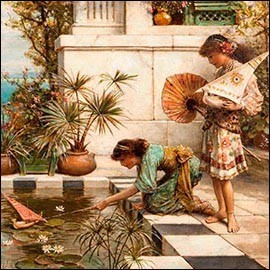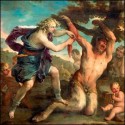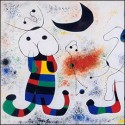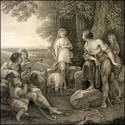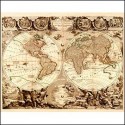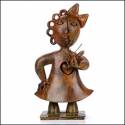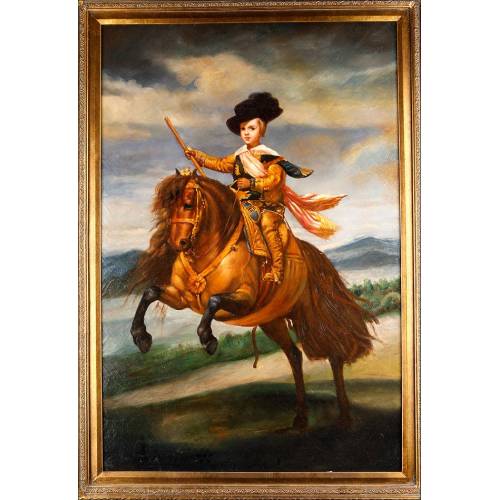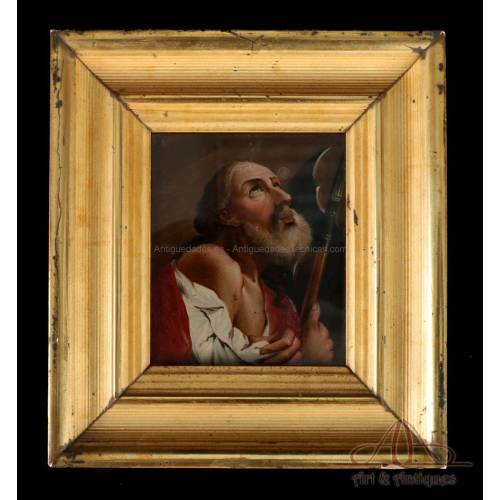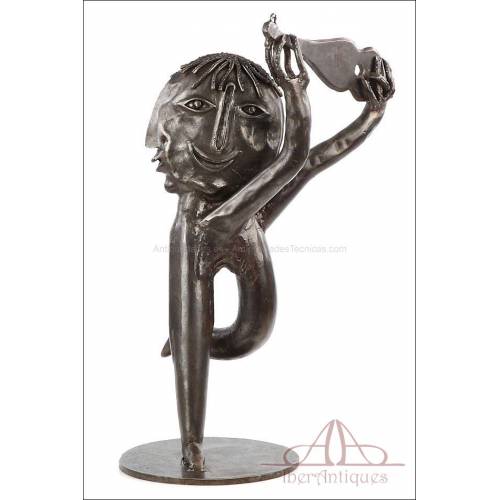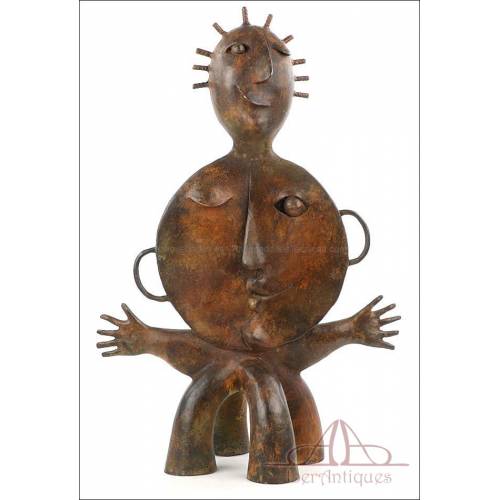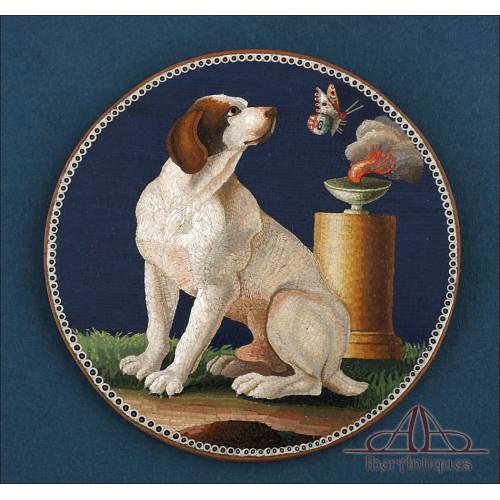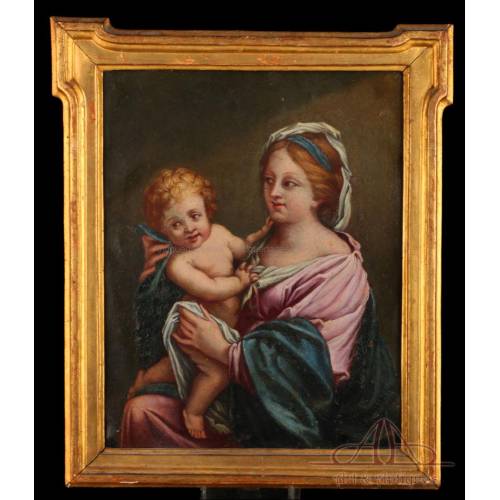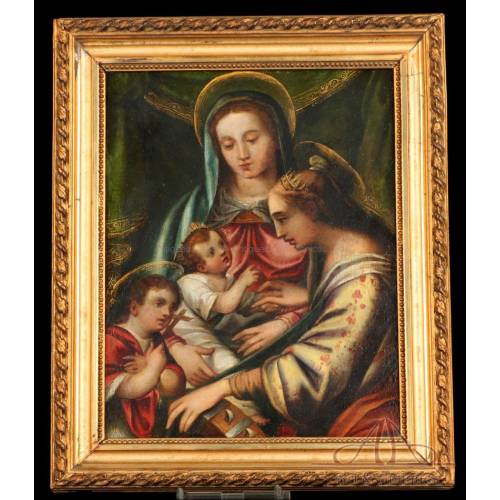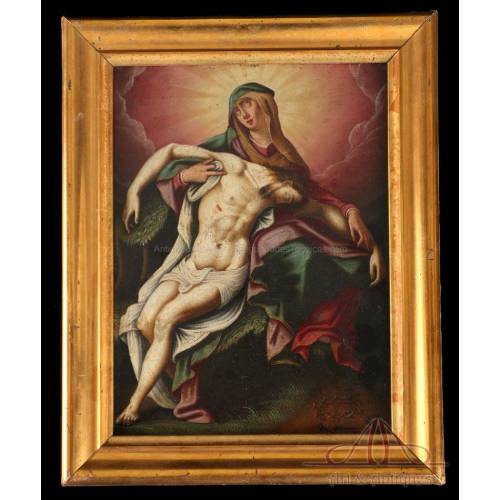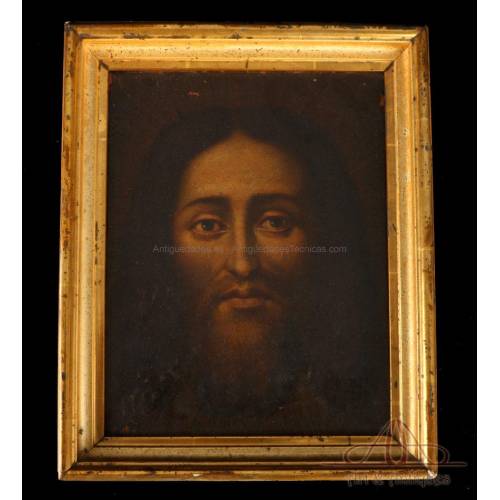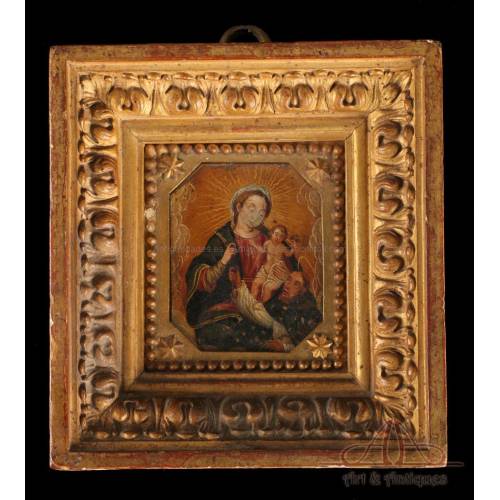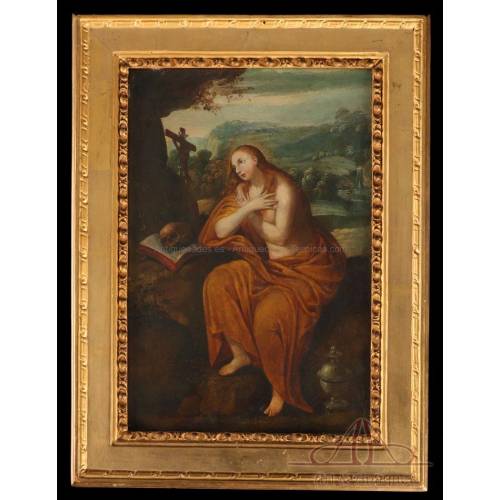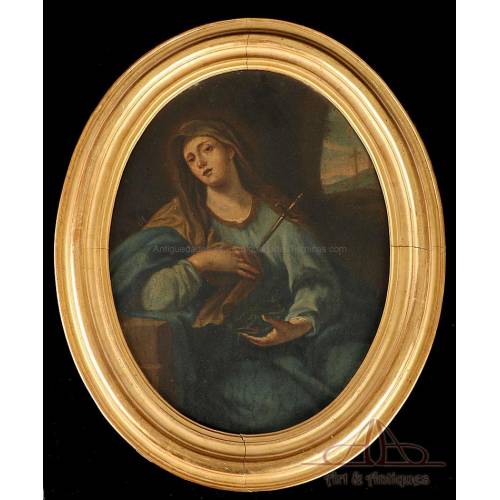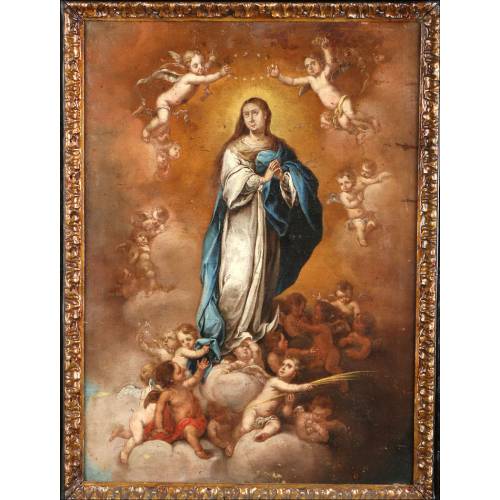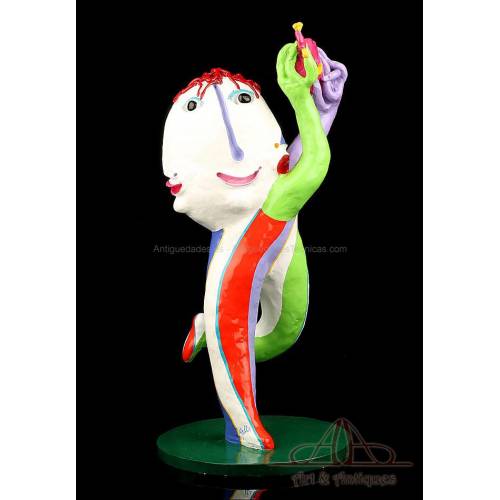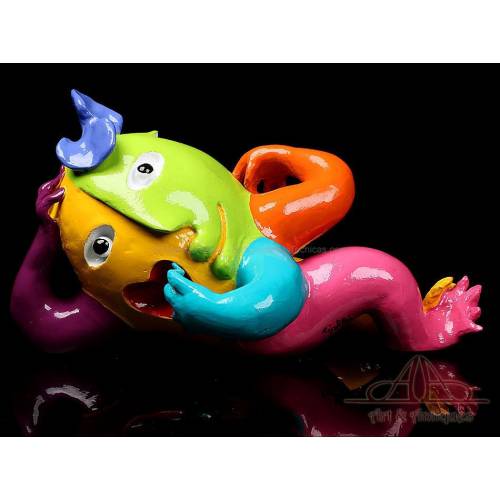Art and painting
Investing in works of art is one of the most booming trends in the world of collecting. Works of art add two great attractions: their plastic and historical interest and their intrinsic value, which today is solid and reliable. They make it possible to embellish homes and spaces with works created by magnificent masters, unique and unrepeatable...
Investing in works of art is one of the most booming trends in the world of collecting. Works of art add two great attractions: their plastic and historical interest and their intrinsic value, which today is solid and reliable. They make it possible to embellish homes and spaces with works created by magnificent masters, unique and unrepeatable pieces that often hide a fascinating past. . And at the same time, they constitute physical and stable assets whose value is usually always revised upwards.
Why invest in art or painting?
Currently, there are many experts who advise investing in art or painting. Works of art, both antique and contemporary, have gone from being "luxury" objects available only to a specialized sector, to become. an option within the reach of many people . Social networks, art fairs and collecting and the possibility of buying via internet offer a lot of information, allowing us to choose the pieces that most interest us and that offer the best guarantees.
A collection of works of art is a strong and reliable investment. especially in the long term. And it also constitutes a fascinating passion, which for many collectors ends up being their true vocation. There are few things that match the excitement generated by searching for, locating and acquiring works by certain artists, periods or styles: it is an activity full of satisfactions.
What types of antique artwork can be purchased?
The options when it comes to investing in art or painting are many. The most common is to lean towards painting, probably the most popular plastic art. The reasons are obvious: the offer is very wide, the paintings are easy to display and place, and the pieces are very beautiful. On the other hand, the most sought-after works of art in history are paintings, both old and new. , both antique and modern. The piece that has achieved the highest value at auction to date is a Leonardo da Vinci religious-themed canvas, 'Salvator Mundi' auctioned in 2017 for $450 million. It is followed by a painting by American expressionist Willem de Kooning, 'Interchange', which sold for 300 million. We can therefore deduce that in today's art market painting is king and that antique and modern art are priced on very similar terms.
But investing in paintings is not the only option for the art-loving collector. Sculpture, printmaking and drawing are also excellent options. , with prices many times more affordable. And we cannot forget the arts applied to craftsmanship and decoration, which often result in pieces of the highest level: ceramics and porcelain, silversmithing and silverware, tapestry ... Handcrafted by true artists, they are also the object of desire for a large number of lovers of beauty and history. In terms of price, the most interesting thing is the wide range of options that exist. You don't have to invest millions of dollars in a world-famous painting to enjoy art collecting and acquire secure assets. Today there is the option of acquiring original oil paintings from the 17th and 18th centuries, for example, with prices around €1,000. . The same goes for internationally renowned artists: it is possible to acquire original hand-signed lithographs by Pablo Picasso, for example, for a price of around €3,000.
How to collect antique or modern art or painting?
It is not easy to teach art collecting; the normal thing is that the collector becomes a collector by his own hobby. First he acquires a work and that leads him to look for others, to meet other collectors, to attend auctions and to expand his knowledge. What is clear is that in order to collect art or painting (antique or modern) is essential to have solid knowledge about the subject. Knowing what characteristics have the works of our interest, what documents must accompany them to ensure their quality and value, what legislation applies to their purchase and sale, which stores or houses, physical or online, are the ones that offer the best guarantees... These are basic aspects when approaching art collecting.
Before starting to invest in art through collecting, the most indicated. is to seek professional advice, visit exhibitions and museums , go to art galleries, attend conferences and auctions and keep informed through reliable sources. These are indispensable activities to develop taste and intuition, which are essential when it comes to locating interesting and quality pieces.
Without a doubt, collecting art or painting is one of the most incredible and satisfying hobbies that can be developed. one can develop. And not only is it a pleasure for our own senses, but it also contributes to preserve the artistic and cultural heritage that surrounds us.
Subcategories
Antique painting
Antique painting raises passions among all kinds of public. . Great art galleries such as the Prado Museum or the Louvre count their visitors by the millions, eager to admire in person the excellence of paintings such as 'Las Meninas'by Velázquez, or 'La Gioconda'by Leonardo da Vinci. And of course, we cannot obviate the enormous value that these works reach at auctions... It is precisely these two qualities, the beauty of the works and their material value, that have given a strong impulse to the collecting of antique paintings during recent times.
Where to get pieces of antique paintings?
Finding antique paintings for sale is not complicated, but verifying their authenticity or appraising their value can be. Precisely for this reason, it is very important to always purchase pieces from reliable auction houses, stores or dealers that guarantee their quality. Among the antique art for sale that can be found available today, paintings made between the 15th to 19th centuries are objects of desire for many collectors. . And yet their styles are totally disparate: the evolution between the earliest and the latest is spectacular, although this in no way diminishes the quality and beauty of Romanesque and Gothic art.
What are the defining characteristics of the different periods of antique painting?
Works made between the 16th and 18th centuries are known as "high period painting". Many of the antique paintings for sale that can be found today, especially of religious subject matter, were made in these centuries. A large number of works from the 17th and 18th centuries can be found, with those from the 16th century being rarer and more sought-after. The antique paintings for sale are usually inscribed in what are known as "schools": pictorial trends that reflect the styles followed by the painters of each country. The best known are the Italian school, the Spanish school and the Dutch school.
In general, there are a number of characteristics that can give us clues as to the period to which an antique painting belongs:
- 15th century. At this time the style known as flamboyant Gothic takes off in Spain, by figures such as Pedro Berruguete or Gil de Siloé. The perspective begins to appear; The works are usually of religious themes and show magnificent use of color. In Italy the art of Fra Angelico stands out, who will be the precursor of the Florentine Renaissance.
- Sixteenth century It is a dazzling period in European painting. Figures such as Leonardo, Michelangelo or Raphael emerge, all of them in Italy. In Spain, during the second half of the century the figure of El Greco, one of the most talented painters of all time, stands out. The perspective improves, and both figures and landscapes or interiors gain in realism and detail.
- 17th century. During this century, Baroque painting reached its maximum expression. In Spain, great masters such as Diego de Velázquez and Zurbarán emerged, while in Europe enormous figures such as Rembrandt, Rubens and Caravaggio emerged. Painting was committed to theatricality and theatricality, with powerful contrasts of light and shadow, faces with intense expressions and bodies that curved in complex postures. At this time, the line begins to gain freedom and anticipates modernity.
- Eighteenth century. With the Enlightenment, European painting recovers repose and serenity. Still some Baroque legacies are maintained, such as the use of light and freedom of composition. In Spain, the work of Francisco de Goya stands out, a true ahead of his time: his paintings reflect a convulsive era and prefigure the expressionism of the twentieth century. It is the century of Rococo, exemplified by Fragonard and Watteau in France, and of the first social painting, with the English painter Hogarth as the greatest exponent.
- Nineteenth Century. This century marks a radical change in all areas. The Industrial Revolution arrives and technical advances are spectacular. Art echoes the new times in works such as those of William Turner, precursor of impressionist and abstract painting of the twentieth century. Naturalistic painting reflects social problems; for the first time, classical themes (mythology and religion) are abandoned to focus on everyday life, politics and events. This is evident in the work of artists such as Eugene Dèlacroix and Theodore Gericault. During the second half of the century, movements such as Romanticism or Pre-Raphaelism will anticipate the avant-garde.
It is clear: investing in antique paintings and getting started in the collecting of these works is an excellent decision. We invite you to discover our offer of antique art for sale, the best selection of authentic works from all periods. The perfect place to find those treasures that add so much value to any collection.
Contemporary Painting
Contemporary painting offers an enormous range of options for collectors and art lovers. The term "contemporary" refers to that which happens or belongs to the present moment. However, when we speak of contemporary art, it is customary to also include works created from the beginning of the 20th century to the present. In fact, the terms "contemporary painting" and "modern painting" are often interchanged.
What are we talking about when we talk about contemporary painting?
Although the official definition of the Contemporary Age covers the years between the French Revolution and the present day, in the artistic field we could encompass this period between the beginning of the 20th century and the present time. In 1910, Wassily Kandinsky paints 'Erstes abstractkes Aquarell' ('First abstract watercolor'), considered the first abstract painting in history. It may be a good time to mark the beginning of modernity in art, although previously there were artists who made works that could be described as modern, and even abstract.
Therefore, if we are looking for contemporary paintings for sale, we will usually find many works to choose from. In general, no particular style has more value than others: abstraction, expressionism, surrealism or hyperrealism, to mention only four of the most relevant, have works of very high value that have reached exorbitant prices at auctions. For this reason, one of the most important keys when buying modern art is to acquire works that we find attractive. That we like. Because collecting art is not only an investment: it is also a passion. Many of the best collectors, those who own some of the best works of art in the world, are also experts in certain styles or schools.
What types of contemporary paintings for sale can we find?
In general, modern art for sale (and art in general) can be grouped into two broad categories: original work and reproductions. Original works fetch a higher value on the market, especially if they are by well-known and sought-after artists. Reproductions can be of antique or contemporary works, but in this case we are talking about those made from the 1950s onwards. Some are pieces of enormous plastic and aesthetic value, made by accomplished artists who know how to capture like no one else the essence and talent of the great masters.
Within the original works, in the case of modern painting it is difficult to establish a chronology. Abstract paintings coexist with realistic and figurative works, depending on the trend followed by each artist. For this reason, it is normal to classify this art by schools. The 20th century has seen the development of such important schools as Fauvism, Expressionism, Dada, Surrealism, Metaphysical painting, Futurism, Cubism or Constructivism, without forgetting styles such as Art Deco, Pop, Abstract Expressionism or Hyperrealism. Throughout the decades, many of these styles have coexisted; and there have always been artists who have followed their own path without belonging to any school. This is the case, for example, of figures such as Amedeo Modigliani, Egon Schiele or Alice Neel.
Collecting modern art is a practice full of interest, as well as an excellent investment for the future. No mass-produced print can compare with a work created and signed by a talented artist: these are very special pieces, which will enhance spaces and stand out for their unique quality.Antique Engravings
Antique prints are works of enormous quality and value, perfect for beginning art collectors. Unlike oil paintings or bronze sculptures, to give two examples, prints are usually more affordable and are also easier to use as part of the decoration. But not all engravings are the same: there are many different techniques, used over the centuries, which give a very special imprint to the works made with them.
Normally, the names of these techniques come from the material with which the plates are made or from the process or products used to make them. The most common are as follows:
- Etching. The name of this technique comes from the popular term used to designate nitric acid, the chemical agent used to abrade the etching plate. The procedure arose in the 15th century in Europe, coinciding in two countries: Germany and Italy. During this century, it was not a technique widely used by artists; however, it is known that masters such as Albrecht Dürer or Lucas Van Der Leyden made etchings with iron and copper plates, respectively. The technique consists of applying an acid-resistant varnish on a metal plate and then tracing the drawing with a punch, scraping off the varnish to expose the metal. When the plate is dipped in acid, it corrodes only the exposed parts, leaving the drawing engraved on the plate. Then, it only remains to apply the ink and press the plate on the paper.
- Lithography. This technique consists of engraving plates on stone and then printing the drawings on paper. It derives from the Greek term "litos", stone. Its origin is later than that of etching; it is believed to have been discovered by the German printer Alois Senefelder in 1796. Lithography has been used by great artists, both antique and contemporary: we can mention names such as Francisco de Goya or Pablo Picasso, without going any further. There is a variant, called chromolithography, which allows to obtain different colors on the same work through successive prints.
- Xylography. Many antique and modern engravings have been made using the woodcut technique. Its name comes from the Greek word "xilos", wood, and refers to prints made by pressing an engraved and inked wooden plate onto paper. It is a technique that combines carving and engraving, since the plates are engraved by hand using gouges and chisels to hollow out the drawing to be reproduced. The woodcut was widely used by great artists such as Albrecht Dürer or the Japanese engravers of the Ukiyo-e school. The German expressionists of the early twentieth century, with Ernst Ludwig Kirchner at the head, recovered this then forgotten technique to disseminate their works.
- Photoengraving. This curious technique combines two artistic disciplines: engraving and photography. The process begins with the realization of a photograph, then impregnate a metal plate with a layer of a photosensitive and soluble in alcoholic solvent. The negative of the photograph is then placed in front of the plate and light is projected onto it; the light acts on the photosensitive product, removing the layer in zones. Finally, the plate is immersed in an acid solution that corrodes the areas "cleaned" by the light. We could say that it is a combination of the etching technique and the photographic process: an ingenious method for reproducing photographs. This technique, developed in 1820 by Joseph Nicéphore Niépce, has made it possible to preserve magnificent antique engravings of spectacular realism. A similar process was invented in 1856 by Louis Alphonse Poitevin and improved by Joseph Albert, known as phototypesetting.
There are many other techniques that have been used over the centuries to make antique engravings: aquatint, linography (engraving on linoleum plate), drypoint, mediatint... And other more modern ones, such as silkscreen printing, used by pop artist Andy Warhol. All of them made possible the popularization and dissemination of art, and today allow us to have fantastic masterpieces, perfect to include in our collections.Antique Maps
Collecting antique maps has thousands of followers. Maps have always been an object of curiosity, attraction and desire for human beings, especially if they are centuries-old documents. Collecting this type of documents, both in the form of charts and as part of antique atlases, has become a real passion for many people. These charts allow us to know how our ancestors saw the world and the territory, and to verify that their knowledge of geography was incredibly accurate. Especially considering that the antique maps were drawn from the ground, without being able to see the contours of the continents from the air or space.
On the other hand, it should not be forgotten that some of these pieces fetch a high value at auction. The most sought-after antique maps and atlases are those that are complete, having been made by important cartographers and printers. Not so long ago, it was a common practice to separate the sheets of atlases in order to sell the maps separately, thus increasing profits. Today, however, the trend is to preserve the works in their entirety. Thanks to this, magnificent works have been preserved, such as an original atlas by Giacomo Cantelli da Vignola with 23 Maps of Europe and the Continents of the World, whose value at auction started at 5,400 euros.
The earliest known map is an engraved Babylonian tablet, dated to the 6th century BC. The circular shape of the map is striking, more symbolic and mystical than realistic. This circular shape is associated with perfection and will be repeated in other later antique maps. This is the case of the first known world map in scale: the map of Anaximander, made around 520 BC. In antique Greece maps underwent an enormous evolution, appearing documents that included latitudes and longitudes or meridians.
The antique maps created between the 8th and 15th centuries gave a new impetus to the art of cartography. Above all, Muslim experts and travelers created documents of enormous value, which included for the first time the representation of cartographic features: mountain ranges, rivers, lakes ... The most prominent is undoubtedly Abu Abdullah Muhammad al-Idirisi, whose world map 'Tabula Rogeriana' (1154, approximately) already considered the Earth to be spherical, adding the aforementioned features. Medieval maps continued to try to represent the world; in Europe they had a strong religious component, with the Bible as inspiration. In many cases, as is the case with the famous Hereford Map (circa 1300), they are scarcely realistic.
The maps of the sixteenth centuries already include the New World, the newly discovered American continent that changed the conception (and cartography) would raise completely. The most antique one that is conserved is the one by the Cantabrian sailor Juan de la Cosa, and at the moment it is conserved in the Naval Museum of Madrid. In the following centuries, much more precise cartographies were created, which were changing according to new discoveries. The maps and projections of Gerardus Mercator (16th century), the first cartographer to make a map of the Arctic, are famous. This map was the inspiration for one of Edgar Allan Poe's best-known stories, "Manuscript Found in a Bottle".
From this moment on, the maps of the 17th, 18th and later centuries reflect a conception of the world and countries much closer to our current reality. Today it is possible to acquire magnificent original engravings in good condition, perfect to be part of a collection or to decorate studios or living rooms previously framed. Because acquiring antique maps is, without a doubt, a fascinating hobby that allows us to delve into the world and the life of our ancestors.Bronzes and calamines
Antique sculptures and figures made of metal alloys are a classic in decoration and collecting. The techniques of alloy metallurgy have been known for millennia: specifically, since the Bronze Age, which is estimated to have taken place between 3,000 and 1,200 BC, approximately. Today we can find precious antique bronzes for sale, with a wide range of prices and options that make it possible for the vast majority of the public to get started in art collecting. But bronze statues are not the only option: antique calaminas are a great alternative for those who wish to start or expand their own collection.
Bronze and calamine sculptures: a bit of history
As we mentioned, the Bronze Age is so named because it was during those years when the metallurgy of this material was developed. Bronze is an alloy of copper and tin, copper being the base metal. Tin appears in the alloy in a proportion between 3 and 20%, depending on the mixture. It is a fundamental material in the history of mankind, as it was the first quality alloy created by man. Bronze was used to build weapons, practical utensils, jewelry or coins, but also for the creation of art objects.
In Antique Egypt, bronze statuettes were common; but it was the Greek civilization that first created large statues. The Romans, for their part, made this technique their own and perfected it. A good example is the horse head found in a German site, dating from the first century and gold plated, which has been valued at about 1.7 million euros and today can be admired in the Roman Fort of Saalburg (Germany).
On the other hand, the origin of calamine sculptures is much more recent. This alloy involves three elements: calamine (zinc carbonate), tin and lead. It was at the time of the French Revolution when it began to be used to make statues and figures, due to the shortage of copper (essential for making bronze and brass) caused by the uprisings. The calamine allowed to continue creating objects of art and for decoration; to improve their appearance, the figures were polychromed, gilded or patinated afterwards. The period of greatest splendor of antique calamine was between the late nineteenth and early twentieth centuries, coinciding with the rise of styles such as Art Nouveau or Art Deco.
Which is more interesting: buying antique bronzes or buying antique calaminas?
Of course, we do not have a categorical answer to this question. It all depends on the interest and taste of the buyer, the availability of quality pieces, the destination you want to give to the objects and your budget. In any case, both options allow to obtain works of art full of beauty, charm and history, perfect to decorate a room or dazzle in a showcase dedicated to the best of the collections.
And there is no reason to be limited only to bronzes and calamines. There are other alternatives for those interested in starting an art collection: without going any further, resin statues and other artistic products. This is the case of the famous 'Nanas' of the French artist Niki de Saint Phalle, which today reach exorbitant figures at auctions. Or, within the field of collecting, the delicious polychrome resin figures of the Valencian sculptor Juan Ripollés. Fantastic pieces full of beauty and expressiveness, perfect for illuminating spaces with the unique character of the most special works of art.
Quadre Prince Balthasar Charles on Horseback, by Diego Velazquez. Quadre Prince Balthasar Charles...
Magnificent oil on panel, copy of Velazquez's painting "Prince Balthasar Charles on Horseback". Magnificent oil on panel, copy of...
SoldSaint Jude Thaddeus. Oil on Glass. Italian School, 17th Century Saint Jude Thaddeus. Oil on...
Wonderful oil on glass painting with the image of Saint Jude Thaddeus. From the Italian School. Very antique. Wonderful oil on glass painting with...
1 300,00 €Gorgeous Patinated Iron Sculpture by Joan Ripollés. Signed. Unique Piece Gorgeous Patinated Iron...
Awesome sculpture by Joan Ripolles, a unique piece with certificate of authenticity. Patinated cast iron. Awesome sculpture by Joan Ripolles, a...
3 600,00 €Gorgeous Patinated Bronze Sculpture by Joan Ripollés. Signed and Numbered. Gorgeous Patinated Bronze...
Amazing bronze sculpture by Joan Ripollés no. II/VIII. Big size. With certificate of authenticity. Amazing bronze sculpture by Joan...
4 700,00 €Fantastic Micromosaic by Giacomo Raffaelli. Rome, Italy, Circa 1800 Fantastic Micromosaic by Giacomo...
Striking micromosaic by mosaic master Giacomo Raffaelli. Complete and in amazing condition. True museum piece. Striking micromosaic by mosaic master...
23 000,00 €Mary with Her Son Jesus. Oil on Copper. Italian School, 17th Century Mary with Her Son Jesus. Oil on...
Amazing oil painting depicting Virgin Mary with Her Son in Her arms. Original work of art of extreme beauty. Amazing oil painting depicting Virgin...
1 800,00 €Mary and Elizabeth with Jesus and John the Baptist. Oil on Copper. Italian School, 17th C Mary and Elizabeth with Jesus...
Beautiful antique oil on copper from the Italian School. Family scene of great charm and spirituality. Beautiful antique oil on copper from...
1 800,00 €Virgin Mary with Jesus in Her Arms. Oil on Copper. Italian School, 17th Century Virgin Mary with Jesus in Her...
Outstanding oil painting depicting Virgin Mary with Her Son in Her Arms. Very antique. Outstanding oil painting depicting...
1 900,00 €Ecce Homo. Jesus of Nazareth. Oil on Board. Italian School, 18th Century Ecce Homo. Jesus of Nazareth....
Great baroque Ecce Homo painted in oil on board, deeply expressive. Original from the Italian School. Great baroque Ecce Homo painted in...
1 300,00 €Sacred Family. Oil on Copper Miniature. Mexican Colonial School, 18th Century Sacred Family. Oil on Copper...
Gorgeous and very antique miniature of the Sacred Family, painted in oil on copper. Collectors piece. Gorgeous and very antique miniature...
950,00 €Saint Mary Magdalene. Oil on Copper. Flemish School, 17th Century Saint Mary Magdalene. Oil on...
Antique oil painting depicting Saint Mary Magdalene. 17th-Century Flemish School Antique oil painting depicting Saint...
2 500,00 €Virgin Mary Mother of Sorrows. Oil on Board. Italian School, 18th Century Virgin Mary Mother of Sorrows....
Amazing antique oil on board from the Italian School. Depicting Virgin Mary Mother of Sorrows. Amazing antique oil on board from the...
2 700,00 €Antique Painting 'The Immaculate Conception', S. XVIII Antique Painting 'The Immaculate...
Magnificent oil painting "Immaculate Conception". Belonging to the Spanish school. Work of a follower of Murillo. Magnificent oil painting "Immaculate...
SoldGirl with Guitar. Resin Figure by Joan Ripollés. Unique Piece Girl with Guitar. Resin Figure...
Sculpture Girl with Guitar signed by Joan Ripollés. Unique piece with a distinctive polychrome. Sculpture Girl with Guitar signed by...
3 200,00 €Child Lying Down. Resin Figure by Joan Ripollés. Unique Piece Child Lying Down. Resin Figure...
Polychrome resin figure made by Joan Ripollés. Unique Piece. Signed and in excellent condition. Polychrome resin figure made by Joan...
1 300,00 €
New products
-

Antique ivory and silver plated stethoscope, late 19th century
Antique stethoscope from the late 19th century in silver-plated metal...
-

Vintage pendant with shell cameo of Jesús del Gran Poder, carved c. 1970
Vintage pendant with a shell-carved cameo of Jesus del Gran Poder, circa...
-

Antique Roman Style Gilded Silver Chalice with Paten. France, 1932
Antique Roman-style chalice in gilded silver with paten. France, 1932....
-

Beautiful Antique 18 K Gold Ring with 7 Natural Diamonds
Antique 18K gold ring with 7 natural diamonds. Delicate openwork design,...
-

Antique Silver Reliquary. José Vilaplana. Valencia, Spain. Circa 1920
Impressive repoussé silver reliquary by José Vilaplana, Valencia, c....
-

Vintage 18K Gold Ring with 7 Natural Diamonds
Vintage 18K gold ring with seven natural diamonds in floral setting....
-

Antique Silver Chalice. Enameled Crosses. Valencia, Spain, 1942
Spanish chalice from 1942 in solid silver, gifted by the Church of...
-

Antique Silver Chalice and Paten. Granada Spain, circa 1900
Spanish chalice in white silver with matching paten, handcrafted....
Specials
-

Album with 12 gramophone records. 78 rpm. Many in Catalan. Original vintage album.
To emphasize sardanas and Catalan...

